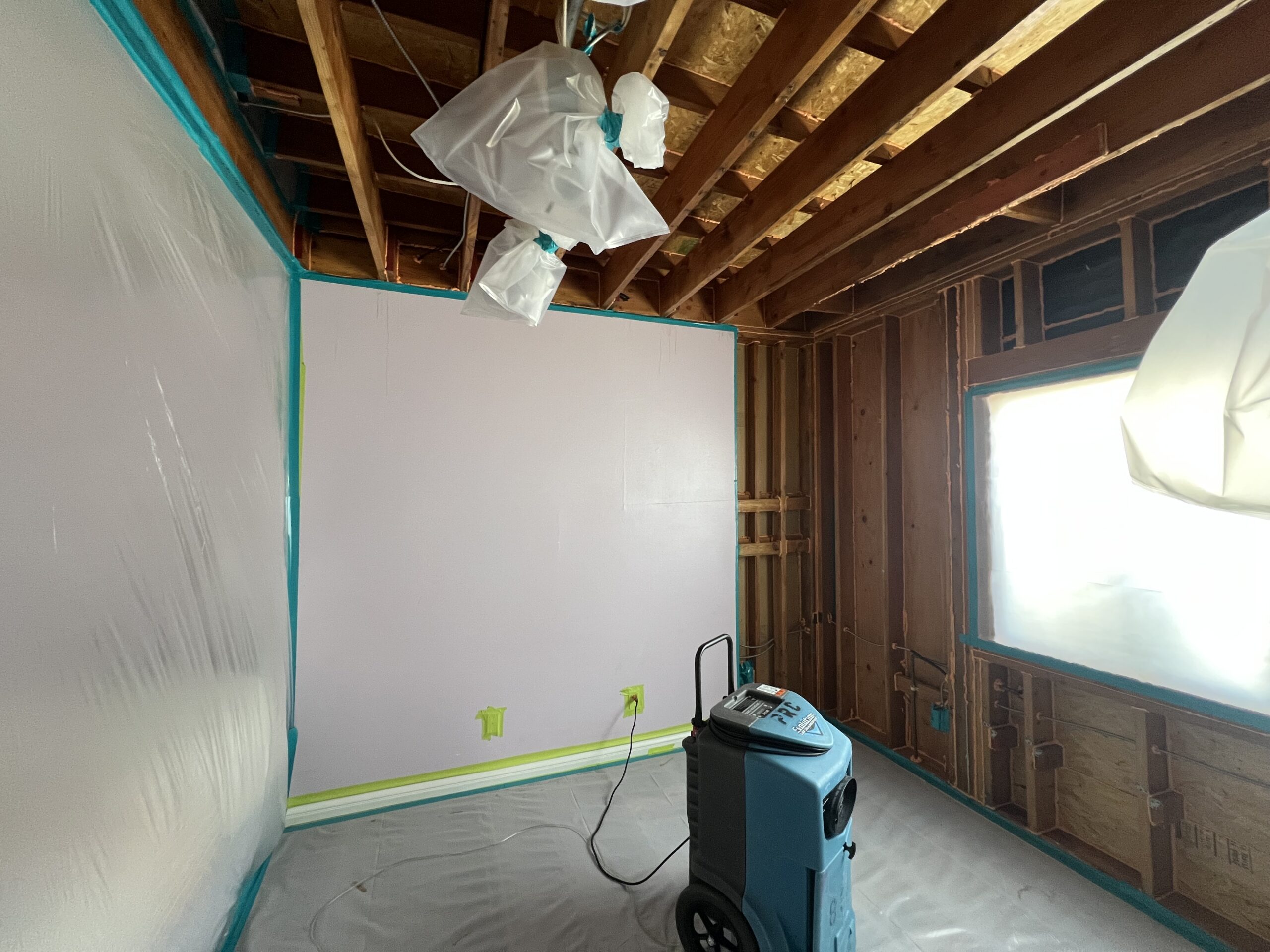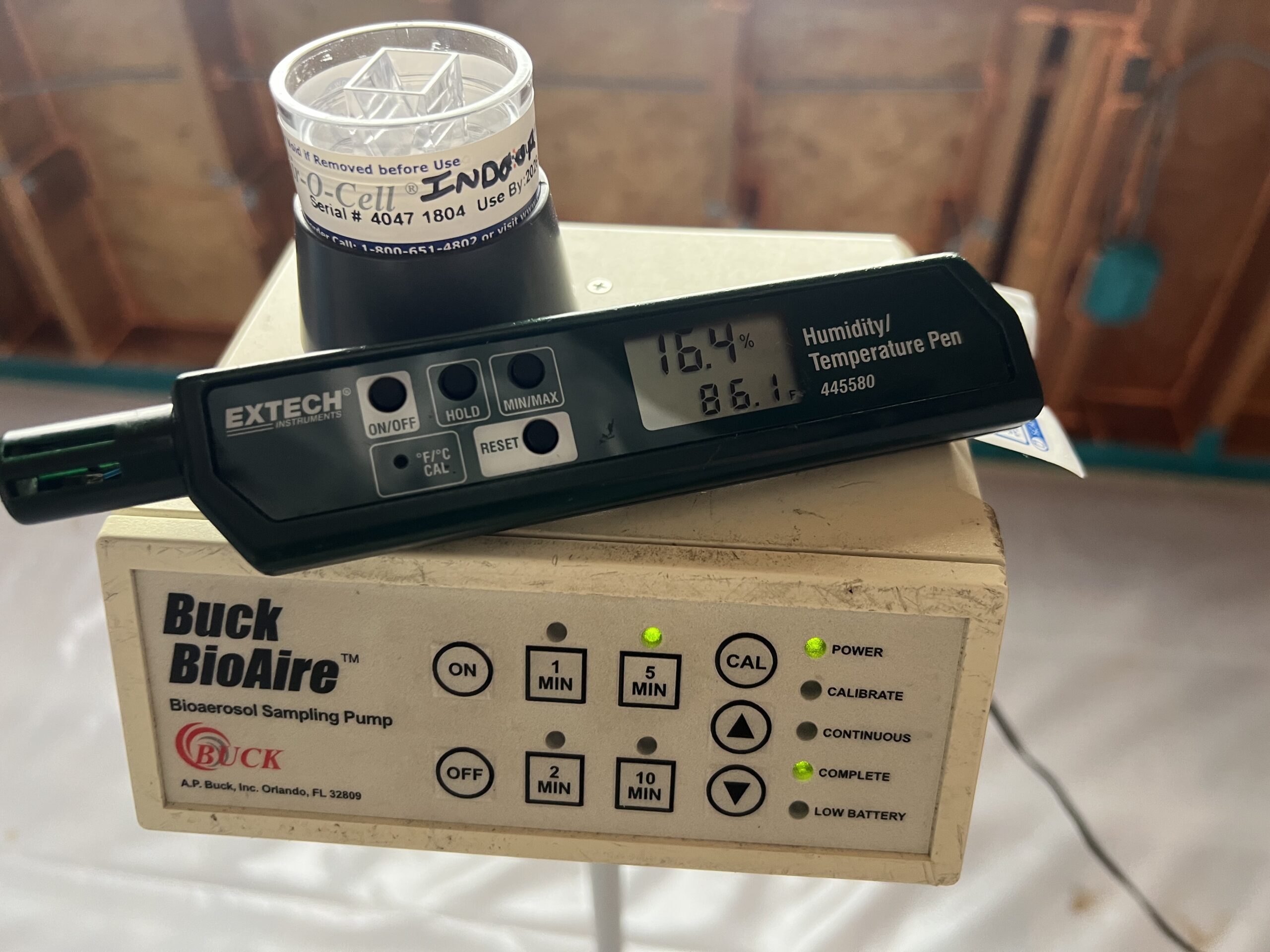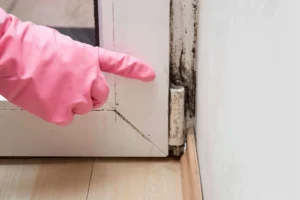 After enduring the stress of a mold problem and the disruption of remediation, there’s immense relief when the contractors pack up and leave. You look around, everything appears clean, and you breathe a sigh of relief.
After enduring the stress of a mold problem and the disruption of remediation, there’s immense relief when the contractors pack up and leave. You look around, everything appears clean, and you breathe a sigh of relief.
But then a nagging question might creep in: “Is it truly gone?” The unsettling truth is that a visual inspection alone isn’t enough. Hidden mold can easily lurk behind freshly painted walls, or lingering moisture could invite a quick recurrence.
This guide is here to provide definitive answers. We’ll explain precisely why a Post Mold Remediation Inspection is the crucial final step in guaranteeing your home’s health. You’ll learn how rigorous mold clearance testing and thorough post-remediation verification work together to ensure your living space is genuinely mold-free, providing the peace of mind you deserve.
Why a Post Mold Remediation Inspection is Non-Negotiable
You’ve invested time, money, and emotional energy into dealing with a mold problem. So why would you need yet another inspection after the remediation crew has left? The simple answer is that a Post Mold Remediation Inspection isn’t just an optional add-on; it’s a non-negotiable step for truly ensuring the health and safety of your home, offering invaluable peace of mind.
Here’s why this final check is so crucial:
- Verifying True Success: It’s the only objective way to confirm that all remediation efforts were effective and that all mold, even hidden pockets, was completely removed. You’ll get definitive assurance the problem is solved.
- Ensuring Moisture Control: A thorough post-remediation inspection also reconfirms that the original moisture problem, the root cause of the mold, has been fully addressed and that affected building materials are completely dry.
- Protecting Your Investment: Skipping this step means unchecked mold can quickly return, undoing all the remediation work and leading to more extensive damage and much higher expenses down the line.
- Avoiding Conflict of Interest: Crucially, this inspection should always be conducted by an independent mold testing company, completely separate from the remediator. Relying solely on the remediator’s word lacks objective, third-party verification.
- Mitigating Future Risks: If you skip it, you risk recurring mold, ongoing health issues for your family, and potential devaluation of your property.
The Process: What Happens During a Post-Mold Remediation Inspection?
So, you’ve decided to get that essential post mold remediation inspection. What exactly can you expect from this crucial assessment? It’s a systematic, multi-faceted process designed to provide a definitive answer to the question: “Is mold gone test?”
Here’s a breakdown of the typical steps:
- Initial Visual Assessment: The certified inspector’s first step is a thorough visual check. They meticulously examine not just the remediated areas but also surrounding spaces, looking for any lingering visible mold, musty odors, or subtle signs of moisture or water damage that might indicate a missed spot or a lingering issue.
- Moisture Readings: Inspectors use sensitive moisture meters to take readings from various building materials. This is incredibly critical because even if no mold is visible, residual dampness will inevitably invite new mold growth.
- Thermal Imaging (Optional but valuable): For a more advanced look, infrared cameras might be employed. These devices detect temperature differences that often reveal hidden moisture patterns within walls or under flooring.
- Air Sample Collection:
-
- Inside Containment: If containment barriers are still in place, air samples are taken inside to assess the air quality.
-
- Outside Containment (and Control Sample): Samples are collected from outside the contained area, along with an outdoor control sample for comparison. This helps determine whether mold spread during remediation or if the indoor air quality has returned to normal.
- Surface Sample Collection (as needed): Swabs or tape lifts may be conducted on cleaned surfaces, particularly if there are concerns about porous materials. These samples provide direct evidence from the treated surfaces to confirm that no viable mold remains.
Decoding the Results: Understanding Mold Clearance Testing and Verification
Once your post mold remediation inspection is complete and all samples have been meticulously collected, the next crucial step in determining if the mold is truly gone shifts to the laboratory. All collected air and surface samples are sent to an independent, accredited lab for thorough analysis.
The scientific data is interpreted to provide definitive answers, forming the backbone of your mold clearance testing and post-remediation verification.
The lab’s primary task is to identify and quantify the mold spores present in your samples. For air samples, analysts compare the indoor spore count and types with the outdoor control sample and, ideally, with the pre-remediation levels of your home. Successful mold clearance testing typically means that:
- Indoor spore counts are significantly lower than outdoor ambient air levels.
- Problematic mold species (like Stachybotrys chartarum, often associated with severe issues) are either absent or at negligible levels indoors.
- The types of mold present indoors predominantly mirror those found in the natural outdoor environment, indicating a healthy balance.
 For surface samples, the lab confirms that no viable mold spores or fungal growth remain on the treated surfaces, ensuring thorough removal.
For surface samples, the lab confirms that no viable mold spores or fungal growth remain on the treated surfaces, ensuring thorough removal.
Following the lab analysis, your independent inspector will compile a comprehensive clearance report. This detailed document outlines all findings, presents the full laboratory results, and provides a clear conclusion regarding the success of the remediation.
This report serves as your mold removal certification or official post remediation verification, giving you concrete evidence that your property is safe.
If, unfortunately, the clearance test indicates a failure, it means the remediation was incomplete, and the remediator is typically obligated to re-address the problem until satisfactory clearance is achieved.
Choosing Your Inspector: The Importance of Independent Mold Testing
When it comes to securing a post mold remediation inspection, who you choose to perform it is as vital as the inspection itself. To truly guarantee an unbiased assessment and peace of mind, it’s paramount that the company performing this final check is entirely separate from the company that carried out the mold remediation. This separation avoids any potential conflict of interest, ensuring you receive objective data, not just confirmation from the remediators themselves.
When selecting an inspector for your mold inspection after remediation, look for key qualifications: ensure they hold relevant certifications from recognized industry bodies and possess substantial experience specifically in post-remediation verification.
An independent mold testing expert serves your best interest, providing trustworthy data on air quality and material dryness. If previous remediation was complex, or if you have lingering doubts, a thorough “mold re-inspection” by an unbiased professional is a necessary follow-up to confirm true success.
Conclusion: Your Gateway to a Truly Healthy Home
A post-mold remediation inspection is the vital final checkpoint in your journey to a healthy home. Through rigorous mold clearance testing and definitive post-remediation verification, you gain the assurance that mold has been truly eradicated. Ensuring complete mold removal is crucial not just for your property’s value but, more importantly, for your family’s health.
For unparalleled peace of mind after remediation, secure expert validation. Contact FunGuy Inspections today. Our experienced and certified mold specialists provide independent post-mold remediation services, ensuring your home is genuinely safe and mold-free.

